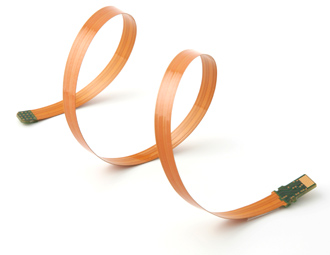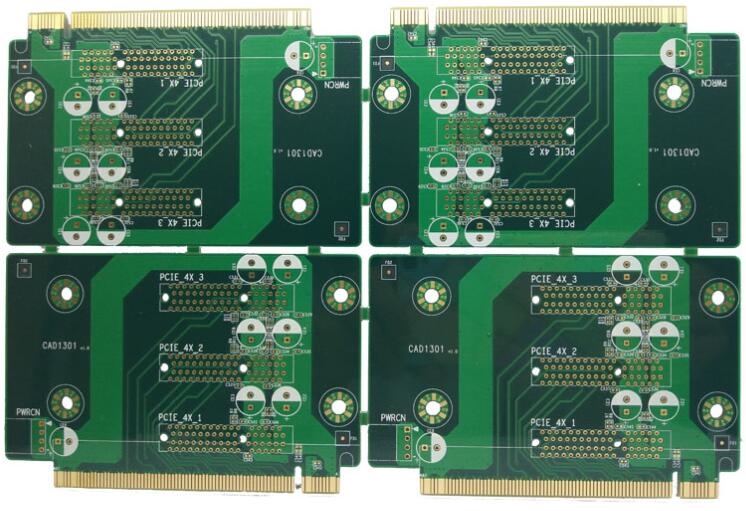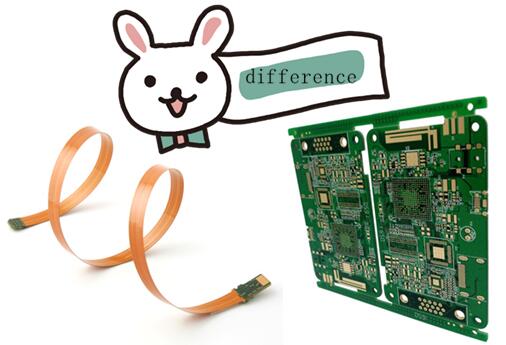The printed circuit board can be divided into rigid printing plate and flexible printing plate according to the production materials.The rigid printing plate has phenolic paper laminate, epoxy paper laminate, polyester glass felt laminate, epoxy glass cloth laminate.Flexible printing plate are also called flexible printed circuit boards (FPC), which are made of polyimide or polyester films with high reliability and high curvature.This circuit board has good heat dissipation, which can be bent, folded and coiled, and can be moved and scaled in 3d space.The FPC can be used to reduce the volume and realize light quantization, miniaturization and thin – type, thus realizing the integration of component devices and wires.FPC is widely used in electronic computers, communications, aerospace and household appliances.
Features of flexible circuit board:
(1) FPC is small and lightweight.
(2) FPC can move, bend and twist.
(3) FPC has excellent electrical performance, dielectric properties and heat resistance.
(4) FPC has high assembly reliability and assembly operation.
(5) the FPC can be installed with three connections.
(6) FPC is conducive to thermal diffusion.
(7) low cost.
(8) processing continuity.
Product features of flexible circuit board:

The soft circuit board is a printed circuit made of flexible insulating base material, which has the advantages of many hard printed circuit boards.
The product is small, light weight, greatly reducing the volume of the device, the application of electronic products to high density, miniaturization, lightweight, thin – type, high – reliable direction development needs.With high flexural resistance, can be bent freely, winding, torsion, folding, stereo wiring, in accordance with the spatial layout for any arrangement, change shape, and any move and scale in three dimensional space, so as to achieve component assembly and wires connect integration.
Excellent electrical performance, high temperature and fire resistance.Stable chemical change, good stability and high reliability.With higher assembly reliability, it is convenient for circuit design and can greatly reduce the assembly workload, and it is easy to guarantee the performance of the circuit and reduce the cost of the whole machine.Additional mechanical stability is achieved by increasing the strength through the use of enhanced materials.The combination of soft and hard design also makes up the slight deficiency of the flexible substrate in the capacity of the component.
Features of rigid circuit board:
High density:for more than 100 years, the high density of printing plate has been developed with the improvement of integrated circuit integration and installation technology.
High reliability:through a series of tests, tests and aging tests, PCB can be guaranteed to work reliably for a long period of time (usually 20 years).
Design:for PCB’s various properties (electrical, physical, chemical, mechanical, etc.), the design of printing plate can be achieved by design standardization, standardization, etc., which is short and efficient.
Productive:adopt modern management, can carry on standardization, scale (quantity), automation and other production, ensure product quality consistency.
Testability:the test method, test standard, various test equipment and instruments have been established to detect and verify the qualification and service life of PCB products.
Rigid circuit board function:

Electronic equipment adopts the PCB, due to the consistency of the same kind of PCB, so as to avoid the artificial connection error, and can realize automatic instrumentation or SMT electronic components, automatic soldering, automatic detection, ensure the quality of the electronic equipment, improve the labor productivity, reduces the cost, and easy maintenance.
Differences between flexible circuit boards and rigid circuit boards:
There are similarities and differences between rigid circuit boards and flexible circuit boards.For the flexible circuit board, rigid circuit board application more widely, because earlier rigid circuit board, so most of the rigid circuit board design element has been used in the design of the flexible circuit board, so what is the difference between a rigid circuit board and a flexible circuit board?
1. The load capacity of the conductor: compared with the rigid circuit board, the flexible circuit board has a relatively little heat dissipation performance, so it must provide enough wire width.Considering the heat dissipation of the flexible circuit board, it is necessary to give the conductor extra width or spacing.
2. Shape:in the general case, the rectangle can be selected, which can be very good in saving the base material, and there should be enough free margins near the edge.If the sharp corners may cause a tear in the plate.Therefore, the width and spacing of the smaller wires should be minimized and the smooth transition must be as smooth as possible.The sharp Angle causes the stress to concentrate naturally, causing the conductor to fail.
3. Flexibility: rigid circuit boards are of course less flexible than flexible circuit boards, which have better performance for a large number of bending cycles.


